Analysis – The Legend of Zelda: A Link to the Past (SNES)
The Legend of Zelda: A Link to the Past
(This is an assignment I did for my Writing in Virtual Worlds and Games class, posted on my personal blog with permission. I have made minor changes to the text and images.)
Background Information
The Legend of Zelda: A Link to the Past is the third game in The Legend of Zelda franchise and was developed and published by Nintendo for the Super Nintendo Entertainment System. It was released in the United States in April 1992 to great commercial and critical success. The game sold nearly five million copies on the Super Nintendo alone and has a 92.78% on the GameRankings review aggregator.
Technical Details
When The Legend of Zelda: A Link to the Past was released in 1992, it was twice as large as most other Super Nintendo games, requiring a then-gargantuan one megabyte cartridge. Even so, the engineers at Nintendo had to invent many tricks and tweaks to fit the entire game on a single Super Nintendo cartridge.
Nintendo ported A Link to the Past to the portable Game Boy Advance in 2002. There were numerous changes made to the game, with the most significant additions being a new dungeon and an entire four-player “cooperatively-competitive” multiplayer mode dubbed Four Swords.
In 2007, A Link to the Past was made available on the Wii’s Virtual Console service.
Gameplay
While the exact terminology for the franchise’s genre is up for debate, The Legend of Zelda games incorporate a mixture of action and role playing elements. The game is played from a two-dimensional, overhead perspective. The overworld is large and contains many hidden items, while completing dungeons advances the game and provides rewards and challenges for players.
The main character, Link, has limited health, represented by hearts in the upper right hand corner of the screen. Link’s standard attack is a sword swing, though A Link to the Past introduced a powerful spin move that requires the sword button to be held down and charged before use. The player also can use a variety of weapons and items to defeat enemies and solve puzzles. Defeated enemies can drop rupees, the game’s system of currency, which are used to buy items and consumables such as bombs and arrows.
Rules and Objectives
The most basic rule in The Legend of Zelda: A Link to the Past is if Link runs out of hearts, he dies and the player is forced to restart. Enemies, holes, and traps are a few examples of obstacles the player must avoid to prevent losing health.
The first portion of the game tasks the player with finding three pendants located in dungeons scattered throughout the overworld in order to find and wield the Master Sword. The second part of the game revolves around rescuing Princess Zelda and six “maidens” from seven more dungeons. Finally, after saving Zelda, the final dungeon becomes available.
Every dungeon follows a pattern that anyone who has played a contemporary Legend of Zelda game will find instantly familiar. After finding the dungeon’s location on the overworld, the first task for the player is to find the “big key,” which is usually necessary for both opening the chest containing the dungeon’s special item and opening the door to the boss room. This is done while the player navigates through the often labyrinthine and large dungeons featuring many difficult puzzles and enemies.
Outside of dungeons, there are many optional side quests to participate in. Most of these quests lead to pieces of heart, and if four are collected Link gains a higher maximum health level. These upgrades are generally optional, but can make the game much easier.
Variety
Nintendo made a number of design decisions in The Legend of Zelda: A Link to the Past to slightly change the experience and keep it fresh throughout the game. Players are given access to a number of strange weapons that include a staff that creates pushable, remote-detonating blocks used for puzzle solving and a medallion that calls lightning from the sky, causing tremendous damage against enemies. Link’s tunic and shield can be upgraded for extra protection along with the boomerang and Master Sword.
Nearly every dungeon in the game has its own interesting style and gameplay challenges, usually centering on the special item located within. The dungeon containing the fire rod has a horror theme, with unique enemies including mummies and disembodied hands that fall from the ceiling. The ice dungeon’s floors are often completely covered in ice, making progress through the labyrinth difficult. Each dungeon ends with a different boss monster that requires new tactics to defeat. Towards the end of the game, a few of the early bosses reappear as mini-bosses that are much more difficult than they were in the first encounter.
One element that was first introduced with A Link to the Past is the inclusion of alternate “Light” and “Dark” worlds; this concept of world duality would not only be echoed in future Legend of Zelda titles, but also extend to other Nintendo franchises such as Metroid. The Dark World, which becomes fully accessible after receiving the Master Sword, gives players a familiar but much more challenging environment to explore and allows the use of switching between the light and dark realms to solve puzzles or access new, previously inaccessible areas. The Dark World is much more sinister than the Light World that is the basis of the first section of the game. Skulls litter the ground and the entire overworld is covered with an oppressive gloom. This change in scenery gives players further incentive to finish the game.
Audience
As with almost any Nintendo franchise, The Legend of Zelda games have always appealed to a wide variety of people and A Link to the Past is no different. The game is suitable for all ages and skill levels due to the lack of realistic violence or other “mature” content while also managing to be mechanically simple and not particularly difficult.
Experience
The Legend of Zelda: A Link to the Past has three distinct aspects to the core gameplay that often intertwine. The integration and execution of the games’ combat, puzzle solving, and exploration are all important parts of what makes the series unique. The game consists of a constant stream of varied situations based on those three elements that give players a constant and satisfying sense of accomplishment.
Sources
“The Legend of Zelda: A Link to the Past for SNES – GameRankings”. GameRankings. 22 Feb. 2010 http://www.gamerankings.com/snes/588436-the-legend-of-zelda-a-link-to-the-past/index.html.
“The Legend of Zelda: A Link to the Past.” Wikipedia, The Free Encyclopedia. Wikipedia, The Free Encyclopedia, 21 Feb. 2010. Web. 22 Feb. 2010. http://en.wikipedia.org/wiki/The_Legend_of_Zelda:_A_Link_to_the_Past.
“Zelda Universe – A Link to the Past”. Nintendo of America. Web. 22 Feb. 2010. http://www.zelda.com/universe/game/past/.
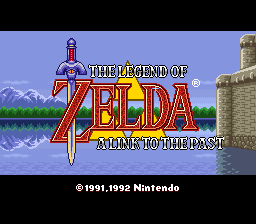
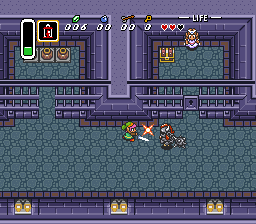
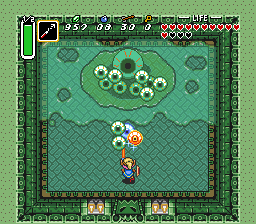
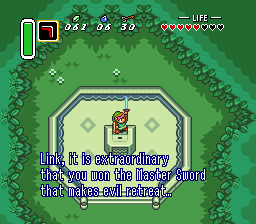
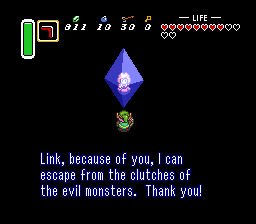
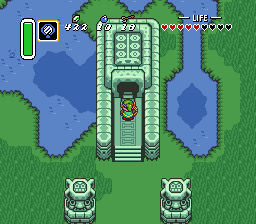


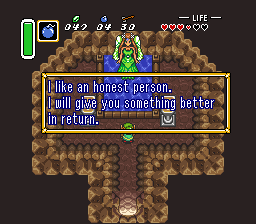

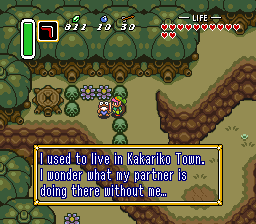
Great article giving a good summary of the game. Have you thought about doing this for other lesser known games? Maybe games that didn’t really get everything right.
Doing more of these is certainly a possibility. Thanks for the feedback!